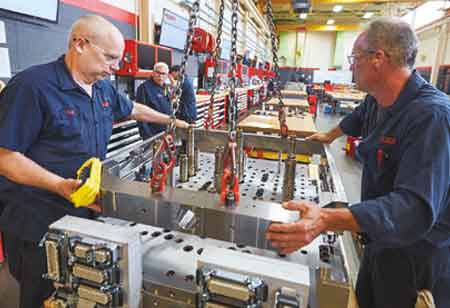THANK YOU FOR SUBSCRIBING

Iot: The Value Of Bringing Legacy Equipment Into The Future
David Gersabeck, Vice President, Connected Products, Otis Elevator

 David Gersabeck, Vice President, Connected Products, Otis Elevator
David Gersabeck, Vice President, Connected Products, Otis ElevatorI have had an incredible opportunity throughout my career to design, release and operationalize IoT ecosystems that attempt to connect the ‘unconnected.’ That is, I’ve helped find business value from data that was previously not available from products constructed prior to the invention of many tools we find ubiquitous today. I call these ‘legacy things.’ Essentially, a product consisting of hardware and software that was designed, manufactured, and deployed well before connectivity or IoT existed. In the case of the vertical transportation industry, this means connecting legacy things that were designed and released 20+ years ago. But, building a connected ecosystem of so-called legacy things is more challenging and yet more rewarding than one might think.
Why is a connected ecosystem of legacy things challenging? Well, to start, by definition, these are products that were designed without requirements to support IoT connectivity. Without connectivity by design, each legacy thing can only support the business requirements and technical interfaces at the time of initial release. This means building an embedded connectivity platform that plugs into a system of legacy things that must emulate certain diagnostic tools, work with existing communication networks and gather data from interfaces that are not normalized nor sanitized for content and consistency.
Next, when developing an embedded connectivity platform, the goal is to build one common platform that functions across the superset of products (a collection of legacy things, if you will). When each unit is built with legacy things that were designed by different teams in different regions, developed by different in-house or tier 1 companies, and tested to perform within the confines of a single system rather than across the entire fleet of product platforms, we quickly discover an explosion of complexity due to inconsistent state machines, data sets, and functional behaviors. Furthermore, because there is no ability to perform remote over-theair software updates of legacy things, all this complexity falls upon the newly connected ecosystem to operationalize, resulting in complex business rules, a multitude of case statements, and significant, unique configurations that grow more complex, with a higher probability of regression issues, as each unit, or legacy thin, gets added to that ecosystem.
“Without connectivity by design, each legacy thing can only support the business requirements and technical interfaces at the time of initial release”
So, with all this complexity and operational challenges, you might wonder what I find so rewarding about the work. For me, when the data does start to flow in from legacy equipment – data that has been hidden for 10 to 30 years – it is almost magical to begin to visualize what this previously unknown data begins to reveal. We can, for the first time, remotely know when something stops functioning, predict when something is about to stop functioning, learn how our customers are using our products, how well our products perform over time, and, ultimately, make better decisions about what is and is not important for our customers in the products and services they purchase from us. These are just a few of the questions we are now asking, with answers from real data we have collected from our own legacy. To think that all these questions and answers have been sitting around waiting decades for us, and all it took was to build a connected ecosystem of legacy things is truly the ultimate value of my journey.
At Otis, we are well on our way to gleaning as many insights as possible by harnessing the Internet of Things in our products. Each day, we are asking more questions and gaining new and exciting insights from products we have just built and also those from 20+ years ago. These insights will ensure our products are operating at peak performance, assist our mechanics with the information they need to maintain and repair our products quickly, and ultimately educate our customers on the value of owning Otis products and services.
Today, Otis units are designed for connectivity at the onset. Our IoT solution leverages lessons learned from legacy things as well as unleashes the power from daily data insights that will best serve our customers and passengers for years to come. It’s all value I couldn’t have imagined when I started my journey but very much a reward worthy of the challenge.
Read Also




















ON THE DECK
NanoTech Europe 2022